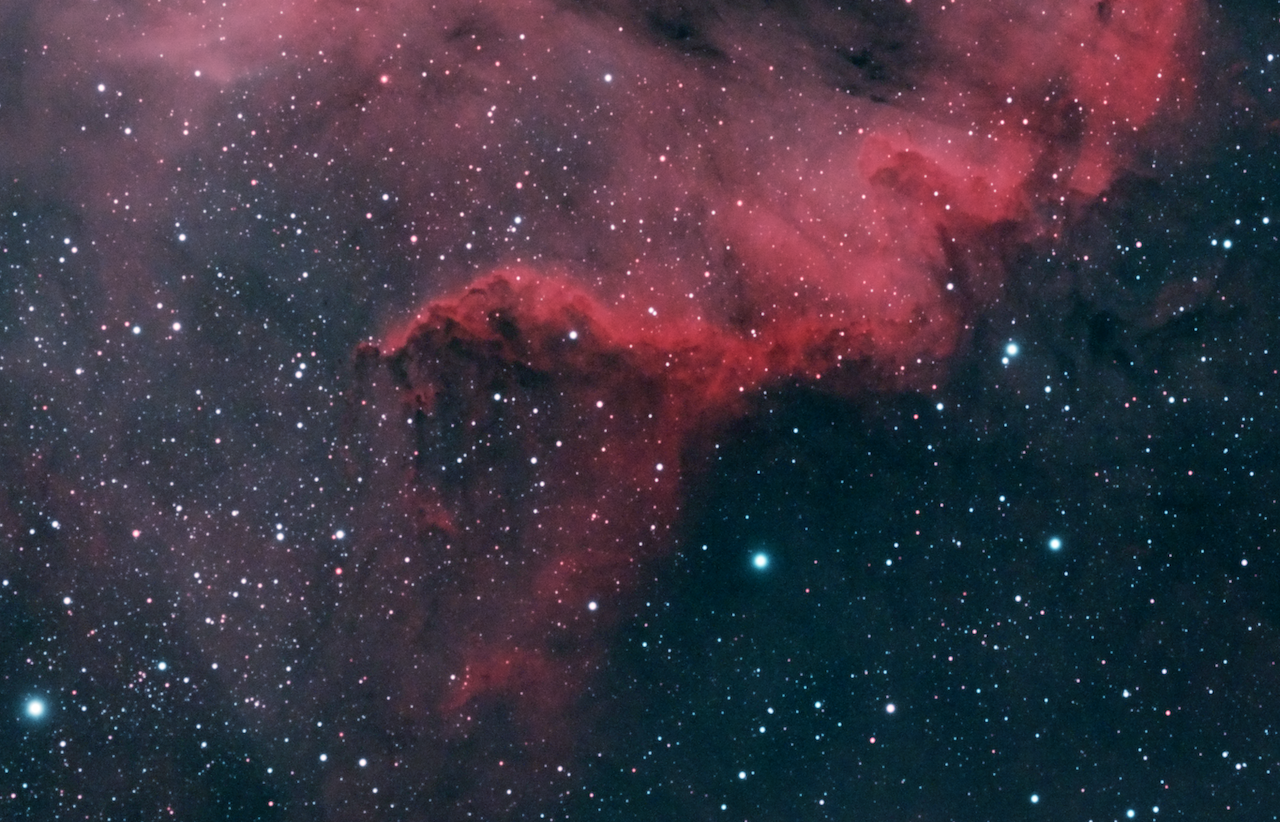Part of the larger “North American Nebula” emission nebula, aka NGC 7000, the Cygnus Wall is the luminous section, captured in true color with a light pollution filter to help highlight the gaseous portions. The billowous pink clouds are the active star-forming hydrogen regions, and the lighter blue background are areas primarily composed of oxygen. This was my second image taken, similar to my attempts with the Crescent Nebula, I captured the Cygnus Wall both with a narrowband filter in place and without.
